Art review: GSA Showcase 2021, Glasgow School of Art
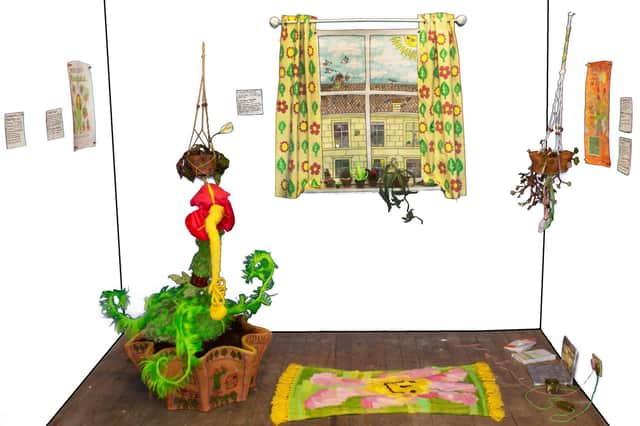

GSA Showcase 2021, Glasgow School of Art ****
It’s tough to be an art student in a pandemic year. The cohort now graduating have completed their courses with limited access to studios, equipment or face-to-face support. Some have done so far away from Glasgow, in Middlesborough or the Isle of Skye, Cairo or Seoul.
Some disappointment on their part is inevitable, and many of the 125 graduating in GSA’s School of Fine Art reference the “Hold GSA accountable” and “Pause or Pay” protests in their online degree shows. The majority will take part in student-run (but GSA-supported) physical exhibitions across the city as part of the Alternative Degree Show Festival, and the postgraduate MFA students will have a showcase at the Glue Factory June 24-27.
Advertisement
Hide Ad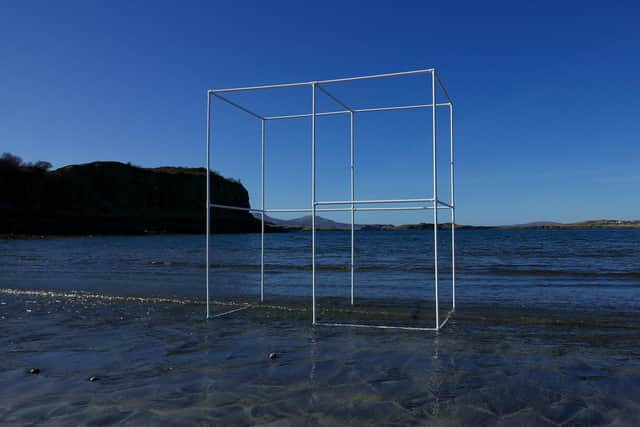

Meanwhile, the digital show manages to be both bigger and easier to navigate than last year, though it is overburdened with lengthy artist statements, not always written with the reader in mind.
During the past year, all of us have spent a lot of time in our homes, so it’s not surprising that, across the four courses in the School of Fine Art (Painting & Printmaking, Sculpture & Environmental Art, Fine Art Photography and the MFA) the domestic sphere recurs, from MFA graduate Brandon Hendrick, whose paintings capture the uncanny found inside the familiar, to the cheerful celebrations of everyday foods by Daisy Iles and Geraldine McConachie.
Nostalgia is much in evidence, as we all look back wistfully at the pre-covid era. Emma Mcandrew D’Souza recreates her room in handcrafts, from the mugs to the laptop and the plants, and documents them all using a basic digital interface, the technology of a bygone era. Holly Houston got round the isolation of lockdown by starting a socially distanced needlework project with members of her family, stitching together the patches they wove into a blanket she calls her ‘Covid Family Hug’.
Closely allied with nostalgia is loss. Both Daisy Weir and Scott Pearce try to reforge connections with lost grandparents. Zara Nicole Smith tends the spider plant given to her by her mother shortly before her death, growing cuttings, making pots and creating a project which brings people together online.
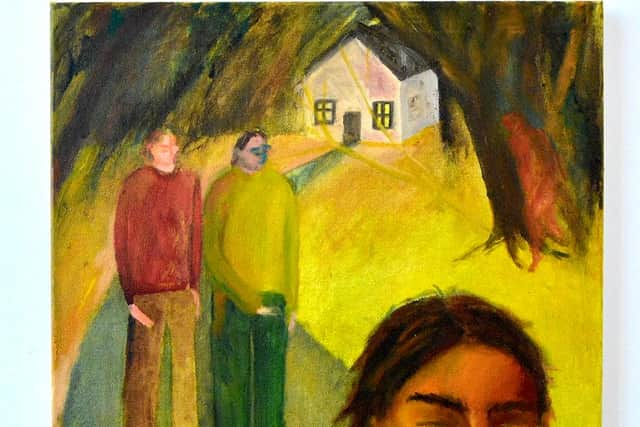

After some years on the fringes, painting is firmly back in the art student’s arsenal. Lizzie Little is a traditional figurative painter who co-founded a life drawing class during lockdown when GSA classes were suspended.
Matilda Barretta’s contemporary figurative paintings capture moments of quiet drama, like film stills. Amy Cameron looks at attitudes to death, drawing and painting her subjects in the morgue. Olivia Gough chooses theatrical moments for her photorealist work, while Noemi Conan takes inspiration from Victor Popkov’s socialist realist ‘Builders of Bratsk’, painting strong, resilient women from the edges of Europe in today’s gig economy.
Advertisement
Hide AdPaulina Pawlik-Barborka is a figurative painter too, but she leaves that behind to work with layers, shadows and reflections when capturing the spiritual aspects of human experience. Orla Kane paints abstracts in soft colours — her watercolours are particularly worth looking out for. Sarah Olivia Johnston paints invented cityscapes in bold colours with Escher-like multiple perspectives.
Film - at times lengthy film - is much in evidence, too, in this lockdown year. Maia Pace’s thoughtful film is described as a “eulogy to the NHS” by someone with “a front row seat watching the NHS starve”. Erin Hephzibah’s portrait of her sister’s relationship with chronic illness is both challenging and insightful. Decca Faire’s meditative portraits of landscape are calming and contemplative.
Advertisement
Hide Ad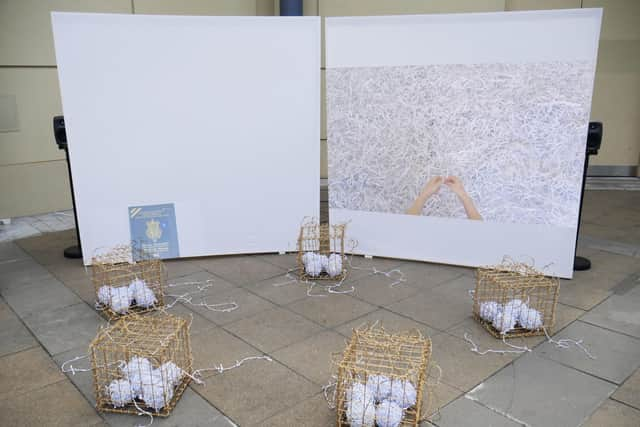

Among the MFA students, Julie Duffy’s film ‘Dancing as Pandemic’ explores obsessive dance crazes, from the one which hit Strasbourg in 1518 to 1990s rave culture. Matthew Cosslett’s film ‘They Could Not Be Seen’ would appear to explore the invisibility of the working-class in a remote Scottish mining town, though he has chosen not to post the full version on the site.
While there have been many practical constraints on artists this year, the evidence suggests that many are still managing to make the work they want. Lloyd Sale has been smelting recycled copper in an old railway sleeper. Blythe Plenderleith has been crafting and building various things, including a bed of nails featuring hand-cast statues of the Virgin Mary (‘Bed of Hails’) and an intricate wooden sculpture involving a ladder and a broom. Tilly Prentice-Middleton has build a portable bus shelter, a remarkably recognisable structure which is then photographed at a range of wild locations. Bella Hansard has built a “natural xylophone” over rocks at a river side.
Julita Hanlon draws on her experience as a migrant in her examination of Faceless Decision Makers, while Paria Moazemi Goodarzi turns the mountain of paperwork around her application for British Citizenship into a sculptural material.
Photographers are finding new ways of looking at the world through a lens: Jake Gatehouse has made a series of “submerged self-portraits”, immersing himself in a range of Scottish bodies of water, while Samantha Clark finds fresh new ways of making images by carrying a shard of mirror with her. MFA graduate Jess Holdengrade uses natually foraged and alternative home-made chemicals to create sustainable silver gelatin prints.
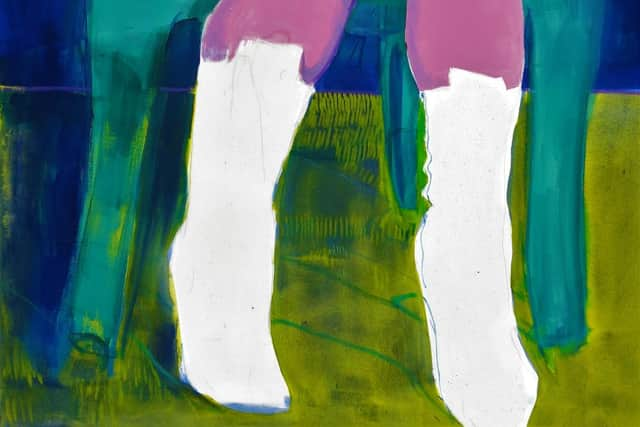

Holly Murphy tells the story of St Thenog (St Enoch) in an illuminated manuscript written in the many languages used in contemporary Glasgow. Lucas Orozco plays with provenance and authenticity with a fragment from the Nuremberg stadium and a print (possibly) owned by Albert Speer.
Eleanor Toft, who bills herself as “Another Fed Up Art Student” takes a wryly humourous look at the business of art-making in her ink drawings and “semi-functional” pots. She has also made a board game based on the experience of art school in a pandemic year. It’s a year which involved a lot of “going back three spaces”, but, on the evidence of this online show, GSA students have proved themselves persistent and innovative, qualities which will surely serve them well as they head out into the world.
Advertisement
Hide AdThe GSA Showcase 2021 is online until 2022 at www.gsashowcase.net. For information on the Alternative Degree Show Festival see www.thealternativedegreeshowfestival.com
A message from the Editor:
Thank you for reading this article. We're more reliant on your support than ever as the shift in consumer habits brought about by coronavirus impacts our advertisers.
If you haven't already, please consider supporting our trusted, fact-checked journalism by taking out a digital subscription at https://www.scotsman.com/subscriptions